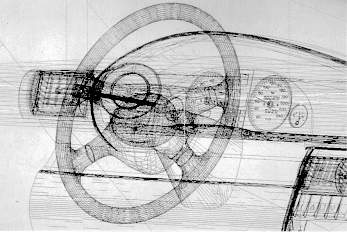
3D Modeling: it's amazing!
For the positioning of the 3D model in the hologram, we use our almost 20 years of experience in holography. We alter a picture of the main view of the object a little bit to get more depth, parallax and dimensionallity. The size of the 3D model has to fit in the holographic space of a 30 x 40 cm hologram. This means the "length:width:depth" ratio should be "3:4:4".

At Dutch Holographic Laboratory we use Silicon Graphics machines running Blender and our own holo software TRACES, and also AUTOCAD on pc's. As important medium we like to use 150 MB TAR tapes and, for smaller files, ordinarry 1.44 MB 3,5" floppies. Until now there is not a standard file format for exchanging 3D Data with all its features such as lighting and camera positions. We normally use DXF files of the Raw data and do the lighting and final view positions ourselves. The Raw DXF file, wich is build up by polilines, is easy to translate.
The lighting determines for a great deal the quality of the hologram. The contrast and dynamic range of a hologram differ from photographs. To get a high quality hologram, this needs extra attention.
When imagewraps are used, please include them on the TAR tape in a SGI, TARGA or TIFF format. Also include a picture that shows which parts have the imagewrap. Let us know if we have to render with or without shadows and if there are parts that mirror. Holograms can be made in different monochrome colors: red, yellow, orange and green.
| Previous Technology | Back to technologies |
© Dutch Holographic Laboratory